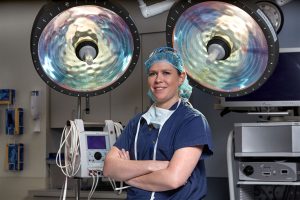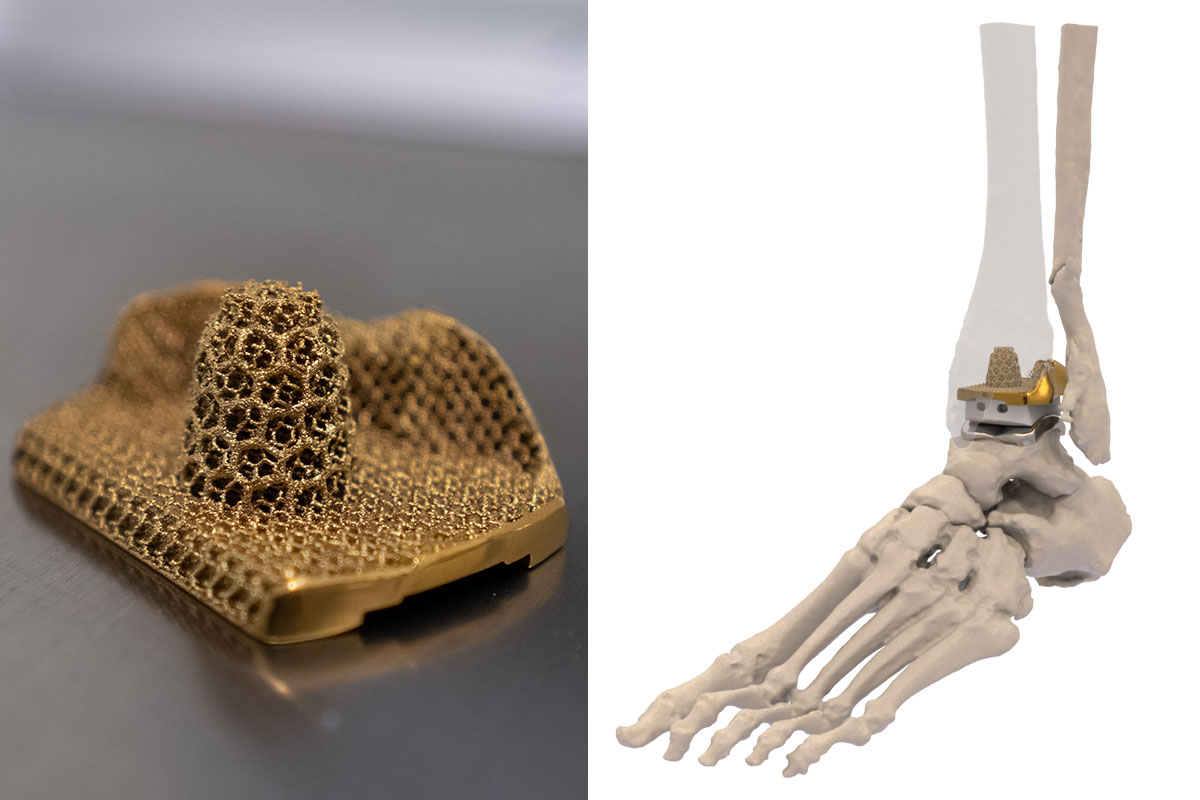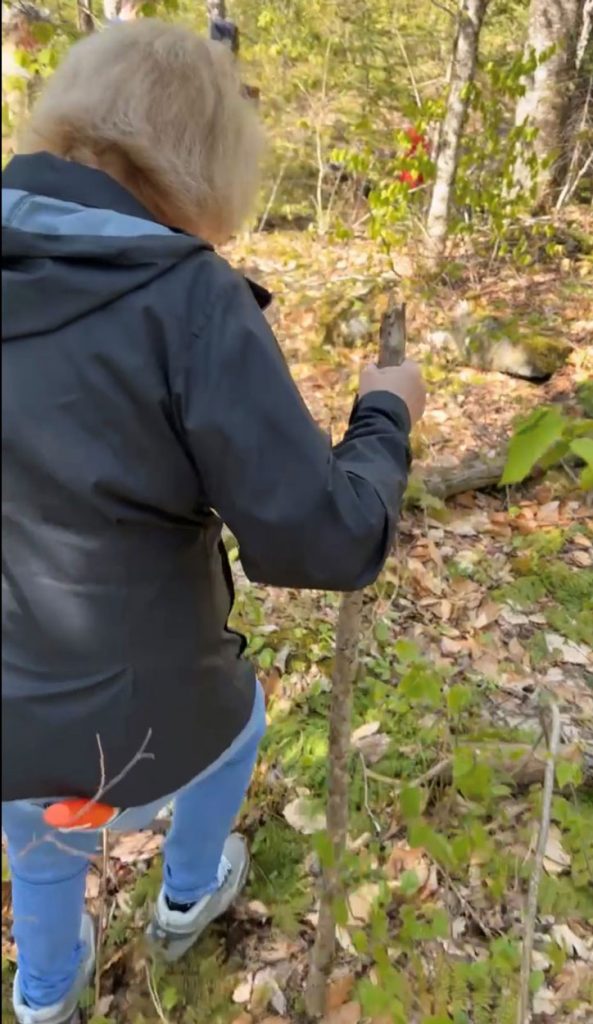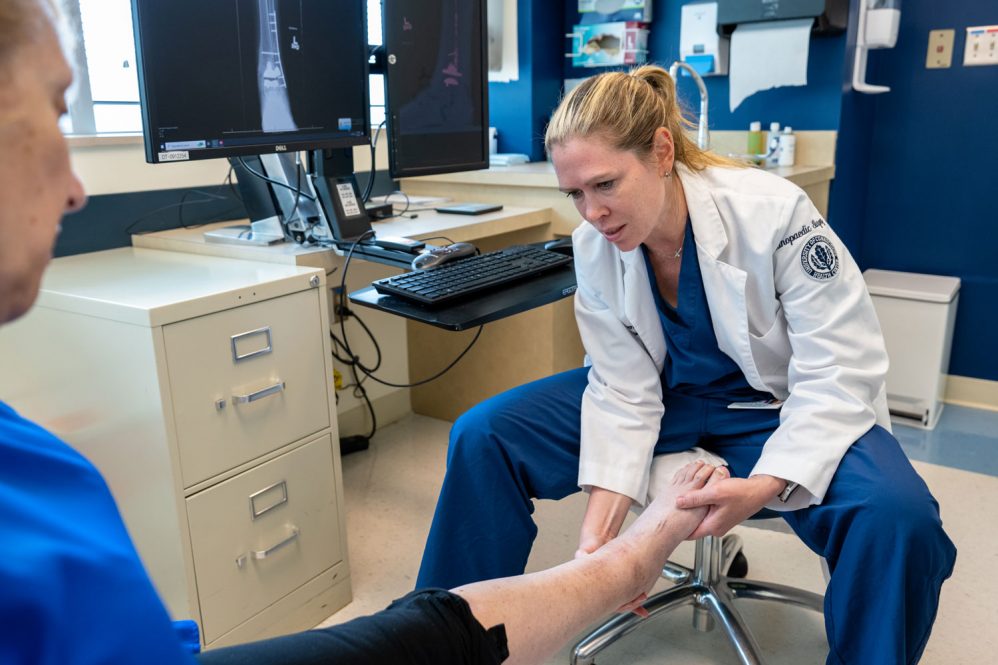Lori Cannon can hike in a heavily wooded area, something that was unthinkable for most of the last two years.

Cannon was 63 when she fell from a ladder at her home in Durham in June 2021, severely injuring her left foot. The surgical repair (done elsewhere) and recovery kept her off her feet for months. Her living room became her bedroom so she could avoid stairs. Multiple stints of physical therapy only got her so far. X-rays were showing bone loss.
“By the end of December of ’21, I was in severe pain all the time, could barely walk on this foot,” says Cannon, a principal trainer in UConn Health’s Department of Information Technology. “So I sought care elsewhere.”
It was January 2022 when she started seeing Dr. Lauren Geaney, UConn Health foot and ankle surgeon. First order of business was to schedule a surgery to remove the hardware from the original ankle repair to address an underlying infection.
“That’s what was causing me to have so much pain and swelling and issues, and probably what accelerated my developing arthritis in this ankle,” Cannon says. “My initial X-rays in June did not show any arthritis. By December, they’re telling me I’ve got severe osteoarthritis in this ankle.”
That would lead to more time off her feet. When she came back to discuss her options, there weren’t many left.

“When you have somebody who has advanced arthritis in the ankle, you really have two options: You can fuse it or you can do an ankle replacement,” Geaney says.
Cannon knew she didn’t want an ankle fusion, which would provide pain relief but at the cost of losing all ankle joint motion and making her more susceptible to arthritis in surrounding joints.
“The problem is, to have a successful ankle replacement in, you’d have to have some support; it’s like putting a roof on without the support, it’s just going to collapse,” Geaney says. “The issue with her fracture was that there was a lot of bone loss, and so we had to come up with a plan that was going to support the implant.”
Geaney brought Cannon’s case to an orthopedics conference in Denver. One recommendation was to use 3D-printing to fabricate the replacement ankle, and with it, additional material to make up for the bone loss and keep the new joint in place.

“It created its own support system within the ankle to give her the option of a total ankle replacement that she wouldn’t have had otherwise,” Geaney says. “This essentially filled in the defect where she had no bone, almost recreating support within the implant itself.”
Geaney worked with a company in Colorado, Paragon 28, to custom-design and produce the specific replacement ankle and surrounding support. It’s made from titanium and a plastic called ultrahigh molecular weight polyethylene, with a titanium nitride coating.
It was somewhat of a surgical gamble. This surgical approach is generally limited to academic medical centers and does not have a long history or significant data on outcomes.
“We’ll be doing X-rays regularly to make sure that it’s not collapsing,” Geaney says. “We know the materials are good, it’s more just making sure the components aren’t shifting.”

The custom replacement ankle went in January, and the early results are encouraging. She reported being pain-free after only a few weeks.
“It’s worked out really, really well,” Cannon says. “It’s lifesaving for me. This has given me back my quality of life, that I would not have had otherwise. Just before she did my surgery to replace this, I was using a crutch on almost a daily basis just to be able to tolerate the pain.”
Implantable devices that are custom 3D-printed based on a patient’s CT scans are relatively uncommon. Cannon’s case was one of the first procedures of its kind in the Northeast.
“I thank Lori for trusting me because this, it’s kind of a whim, and you don’t know what you’re going to get,” Geaney says. “As medical providers, for people who barely know us to trust us with everything, it takes a lot, and that’s something that we don’t always appreciate.”
Cannon says she knew it would be no sure thing.
“I didn’t feel like I had any other option,” she says. “So if I didn’t take the gamble, as time went on, I’d be wheelchair-bound.”
As for her pain level?
“I have no pain,” Cannon says. “I can’t remember the last time I took Tylenol for this foot.”
Learn more about UConn Health’s foot and ankle care at the UConn Musculoskeletal Institute.



